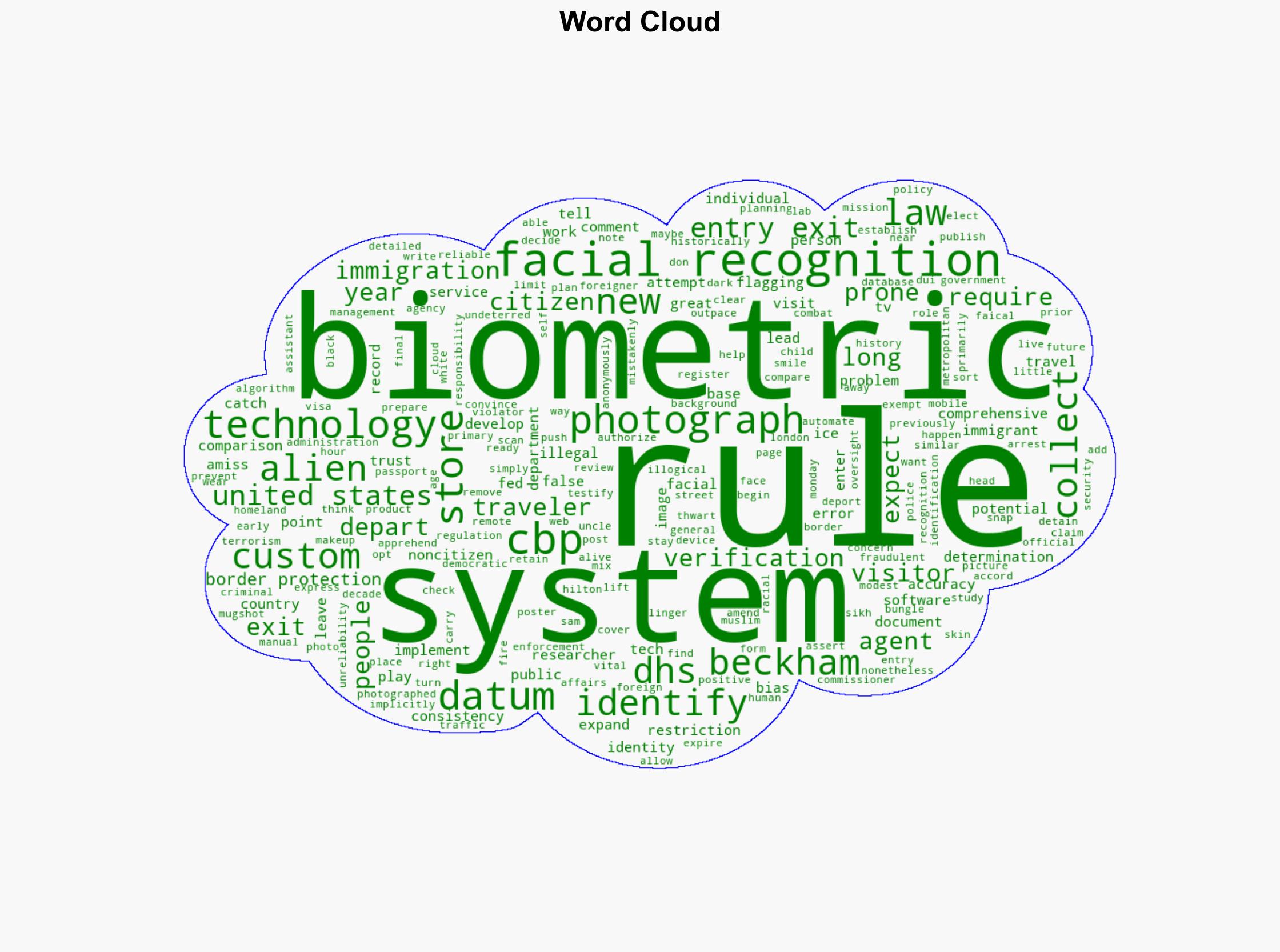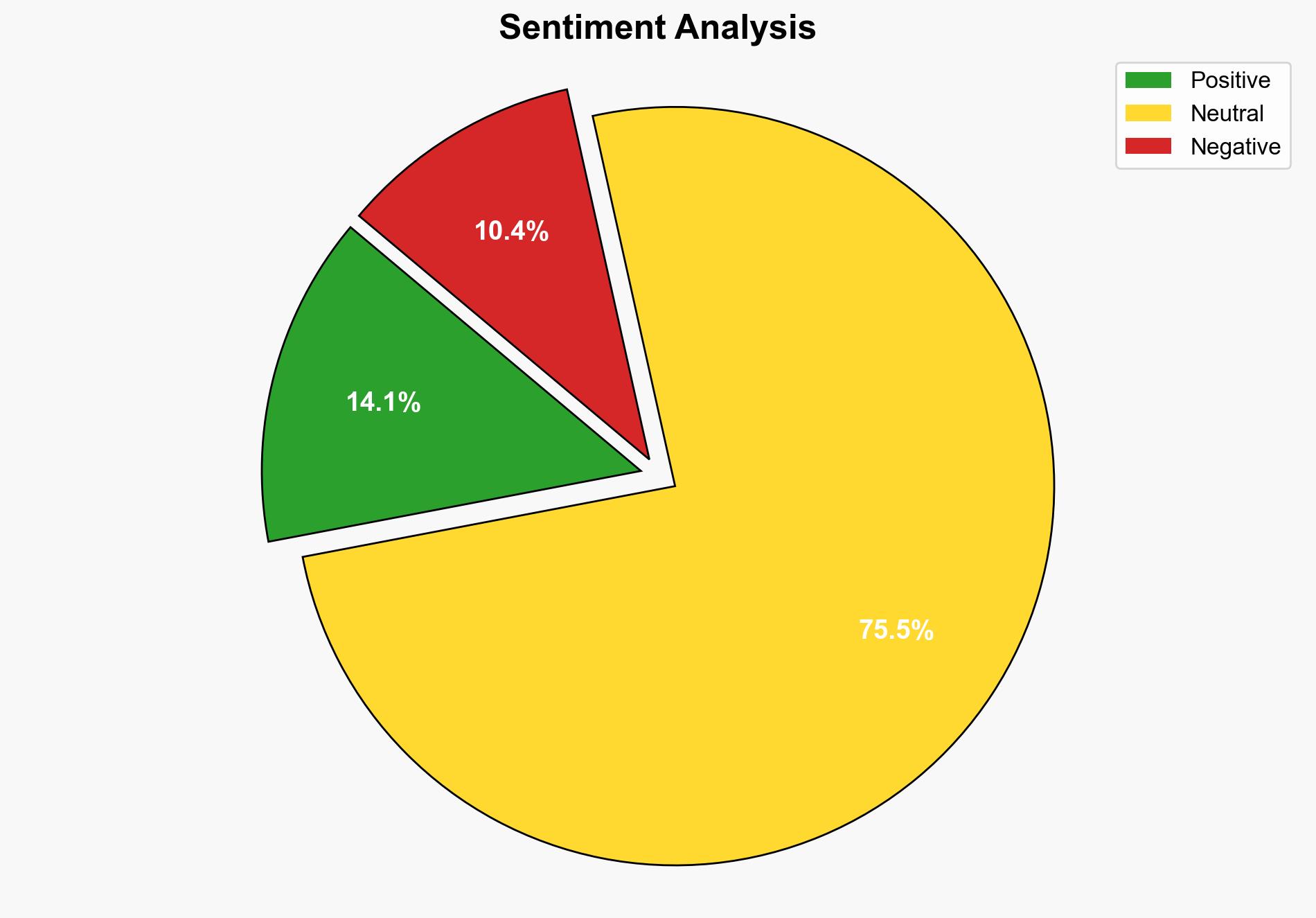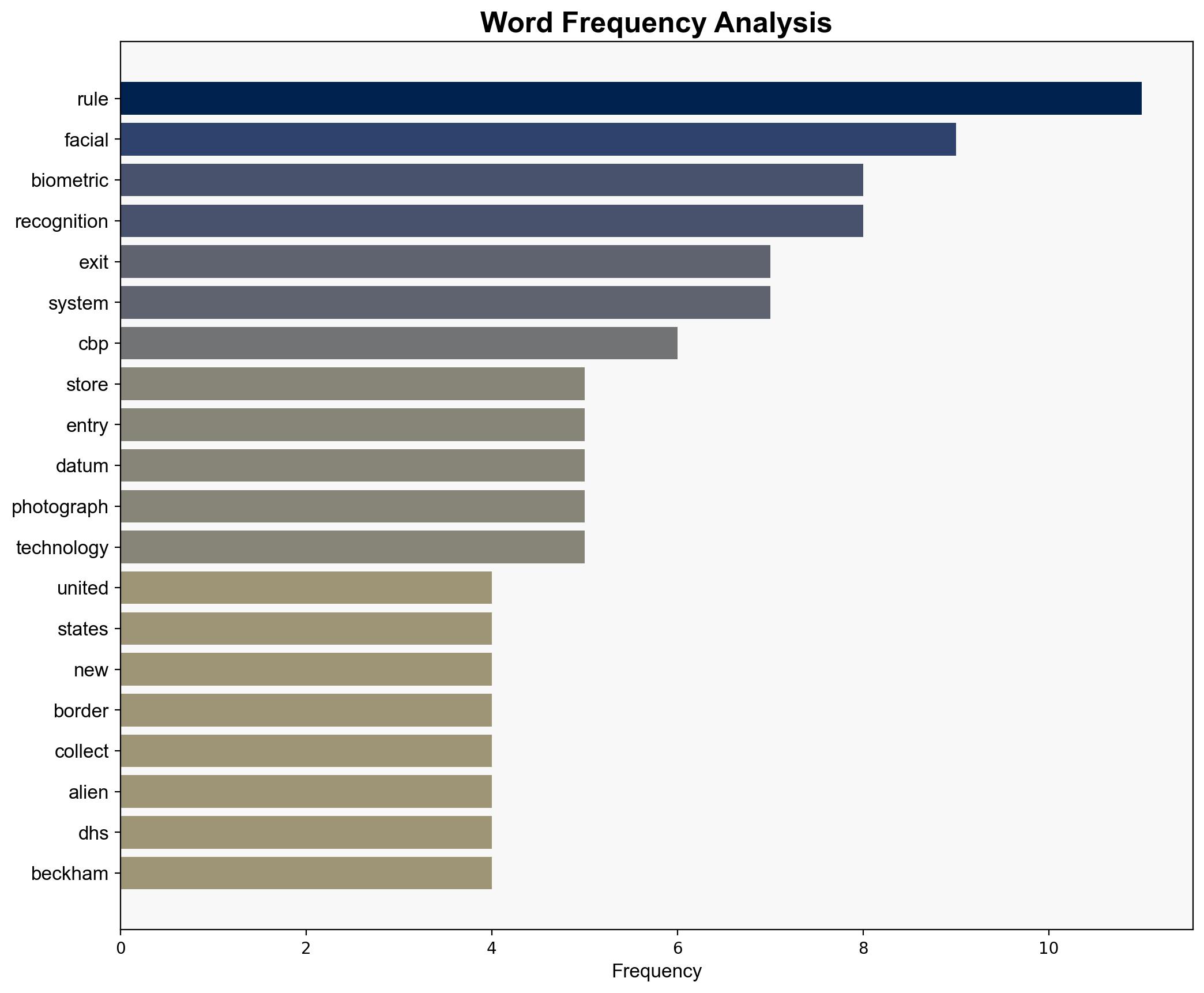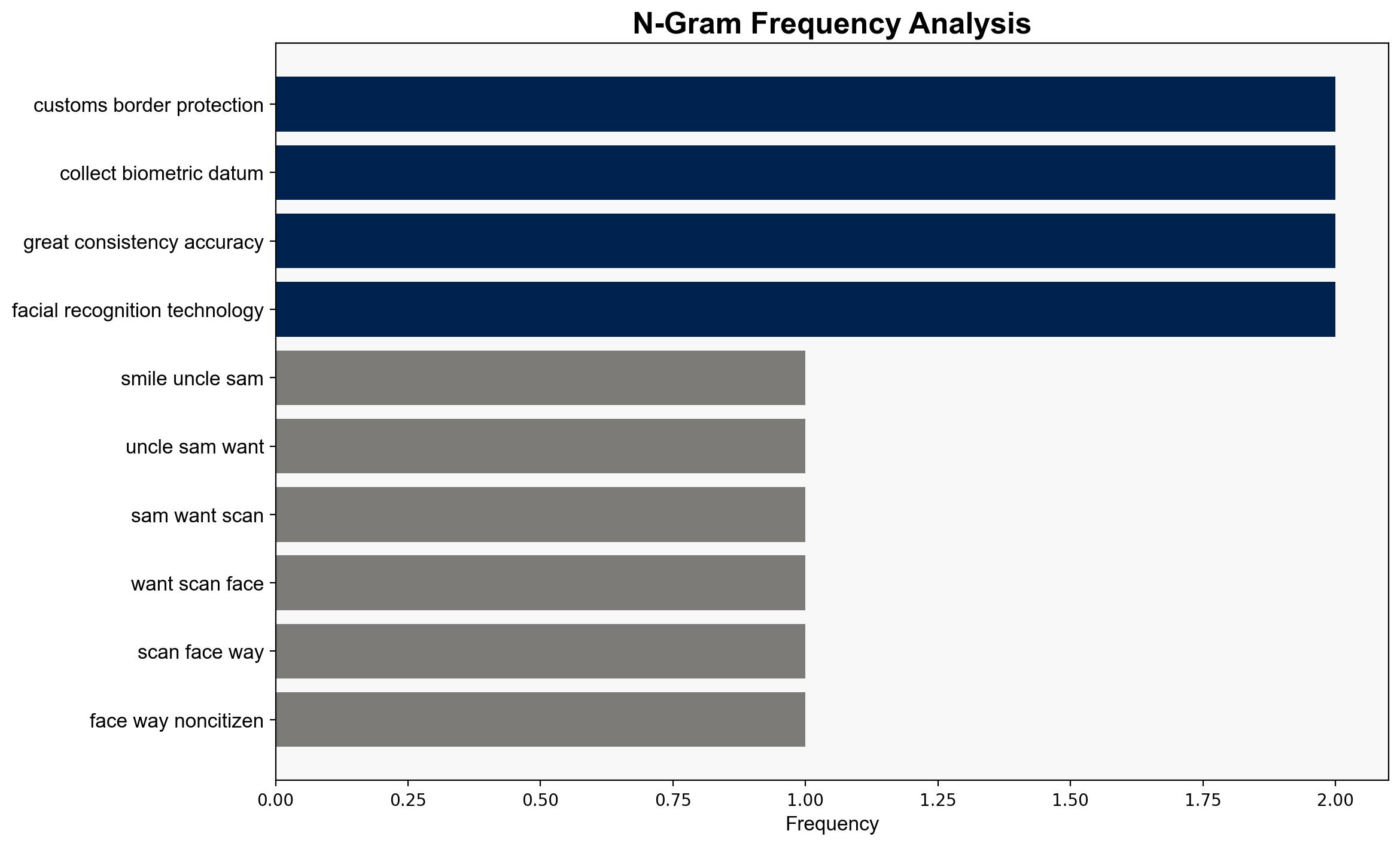Smile Uncle Sam wants to scan your face on the way in and out – Theregister.com
Published on: 2025-10-29
Intelligence Report: Smile Uncle Sam wants to scan your face on the way in and out – Theregister.com
1. BLUF (Bottom Line Up Front)
The most supported hypothesis is that the expansion of biometric data collection by the Department of Homeland Security (DHS) aims primarily to enhance national security by preventing terrorism and limiting fraudulent travel. However, there are significant concerns about privacy, racial bias, and the potential for misuse of data. Confidence in this assessment is moderate due to the presence of contradictory evidence regarding the effectiveness and fairness of facial recognition technology. Recommended action includes advocating for transparency in data usage and implementing robust oversight mechanisms.
2. Competing Hypotheses
1. **Hypothesis A**: The primary objective of the DHS’s expanded biometric data collection is to enhance national security by preventing terrorism and reducing illegal immigration.
– **Supporting Evidence**: Statements from DHS officials emphasize the role of biometric data in preventing terrorism and identifying unauthorized stays. The rule aims to create a comprehensive system for tracking foreign visitors.
2. **Hypothesis B**: The expansion of biometric data collection is driven more by technological interests and potential commercial applications, with national security as a secondary justification.
– **Supporting Evidence**: The article highlights concerns about the reliability and bias of facial recognition technology, suggesting that the technology may not be ready for widespread use. There is also mention of potential misuse and privacy issues, which could indicate ulterior motives beyond security.
3. Key Assumptions and Red Flags
– **Assumptions**: Hypothesis A assumes that biometric data collection is effective in preventing terrorism and that the technology is reliable. Hypothesis B assumes that commercial interests are influencing policy decisions.
– **Red Flags**: The reliability and bias of facial recognition technology are significant concerns. The lack of transparency in how data will be used and stored raises privacy issues. The potential for racial bias in the technology is a critical red flag.
4. Implications and Strategic Risks
– **Implications**: If Hypothesis A is correct, the U.S. could see improved border security and reduced illegal immigration. However, if Hypothesis B holds, there could be significant privacy violations and public backlash.
– **Strategic Risks**: The use of biased technology could lead to wrongful detentions and exacerbate racial tensions. Misuse of data could result in legal challenges and damage to international relations.
5. Recommendations and Outlook
- Implement strict oversight and transparency measures to ensure data is used solely for security purposes.
- Conduct independent audits of facial recognition technology to address bias and reliability issues.
- Scenario Projections:
- **Best Case**: Improved national security with minimal privacy concerns due to effective oversight.
- **Worst Case**: Significant privacy violations and public backlash leading to policy reversal.
- **Most Likely**: Gradual implementation with ongoing debates over privacy and security balance.
6. Key Individuals and Entities
Hilton Beckham, CBP Assistant Commissioner for Public Affairs, is a key figure in communicating the DHS’s stance on biometric data collection.
7. Thematic Tags
national security threats, cybersecurity, counter-terrorism, regional focus




